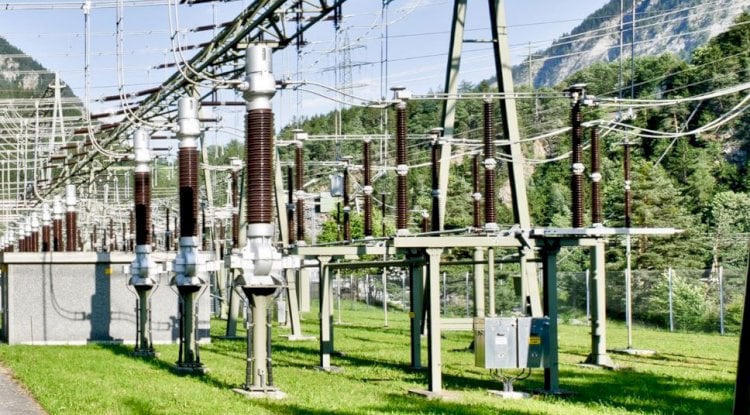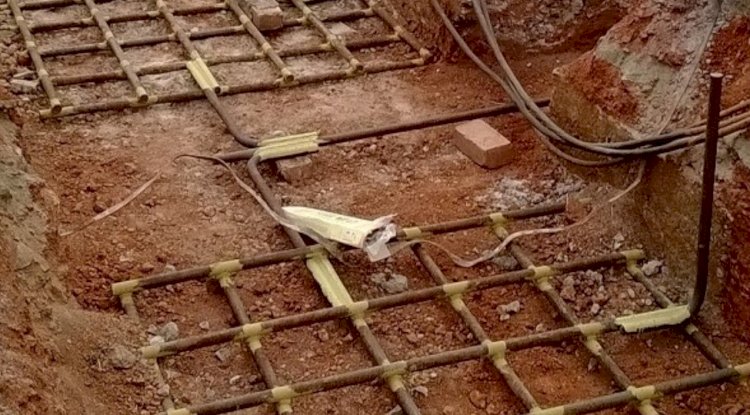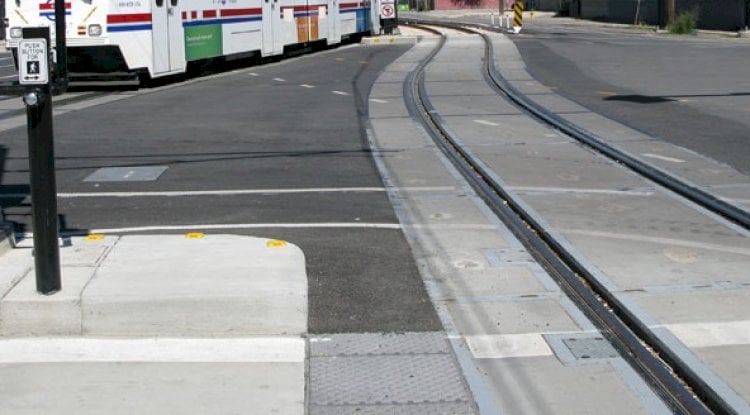A White Paper by E&S Grounding Solutions, Inc.
The Grandfathering Myth: What Older Substations Must Know About 29 CFR 1910.269
Understanding compliance obligations when upgrading electrical systems
If you operate or maintain an older substation, you may have heard the term "grandfathered" tossed around when discussing OSHA compliance. Perhaps you've been told that because your facility was built decades ago, it doesn't need to meet current 29 CFR 1910.269 requirements—especially the grounding provisions in section (n) and Appendix C Part III. Unfortunately, this common assumption could be putting your workers at serious risk and your organization in regulatory jeopardy.
The reality is more nuanced, and understanding the distinction between what is and isn't grandfathered could be critical when you're planning that next transformer upgrade or load expansion.
The Grandfathering Question OSHA Answered in 1994
When OSHA finalized 29 CFR 1910.269 in 1994, the electric utility industry made a strong push for blanket grandfathering of existing installations. Industry representatives argued that retroactively applying new requirements to facilities built under older standards would impose tremendous financial burdens without corresponding safety benefits.
OSHA's response was clear and unequivocal: No blanket exemptions.
In the Federal Register preamble to the final rule, OSHA stated: "The standard consists largely of work practice requirements that are necessary for employee safety. The Agency believes that it is important to apply these work practices in full to existing installations, as well as to conductors and equipment that are installed in the future."
But OSHA didn't completely ignore industry concerns. Instead, the agency took a surgical approach, providing limited grandfathering only for specific equipment design provisions where the rulemaking record demonstrated that retrofitting would be prohibitively expensive with minimal safety gains.
The Critical Distinction: Work Practices vs. Equipment Design
Understanding OSHA's approach requires recognizing the fundamental difference between two types of requirements in 1910.269:
Work Practice Requirements: No Grandfathering
Work practices describe how employees must perform tasks to stay safe. These requirements can typically be implemented through training, procedures, and operational changes without costly physical modifications to facilities. Section 1910.269(n) on grounding for employee protection falls squarely into this category.
The grounding requirements in section (n) specify:
•How temporary protective grounds must be placed to prevent hazardous potential differences
•What specifications protective grounding equipment must meet
•When and how to test for voltage before grounding
•Proper procedures for connecting and removing grounds
•Requirements for establishing equipotential zones
These work practices apply to every substation, regardless of when it was built. There are no exceptions based on facility age.
Equipment Design Requirements: Limited Grandfathering
Equipment design requirements specify the physical characteristics of installations—clearances, spacing, structural features, and similar attributes that are expensive to modify after construction. For these provisions, OSHA provided case-by-case relief where justified.
Example 1: Access and Working Space
Section 1910.269(u)(1) requires sufficient access and working space around electric equipment. The regulation includes a note recognizing that older installations not meeting current ANSI C2 standards may still comply if:
1.The installation conformed to the ANSI C2 edition in effect when it was built
2.The configuration still enables employees to maintain minimum approach distances
3.The precautions taken provide equivalent protection
Example 2: Conveyor Warning Systems
Section 1910.269(v)(11)(x) exempts coal conveying systems installed before the standard's effective date from audible warning device requirements—but only until their control systems are rebuilt.
Notice the pattern: even where grandfathering exists, it's conditional and performance-based. The facility must still provide equivalent protection.
When Does "Alteration" Trigger Compliance?
Here's where many facility managers get tripped up. The regulation uses the term "alteration" in defining its scope, but what exactly constitutes an alteration? Is it only physical changes to the grounding system itself, or does it include modifications to the electrical system?
The answer has significant practical implications. If you're planning to install new transformers or increase system loads in an older substation, does that trigger a requirement to bring the entire grounding system up to current standards?
The Broad Definition of Alteration
The term "construction work" in 1910.269(a)(1)(ii)(A) is defined by reference to 1910.12(b) as "work for construction, alteration, and/or repair." The preamble further clarifies that this includes "the erection of new electric transmission and distribution lines and equipment, and the alteration, conversion, and improvement of existing lines and equipment."
OSHA's interpretation makes clear that "alteration" encompasses both:
Physical Grounding System Changes:
•Installing new ground grids or ground mats
•Modifying grounding electrode configurations
•Upgrading ground conductors
Electrical System Modifications That Affect Grounding Performance:
•Installing new transformers (changes fault current levels)
•Increasing system loads (affects fault current magnitude)
•Voltage upgrades (changes electrical stress)
•System reconfigurations (alters fault current paths)
•Adding generation sources (changes fault contributions)
•Modifying protective relay settings (affects clearing times)
The Underlying Principle
The key principle is this: any modification that changes the electrical parameters affecting grounding system performance constitutes an alteration. This makes sense from a safety perspective. Your grounding system was designed based on specific assumptions about fault current magnitude, duration, and distribution. When you change those parameters by upgrading transformers or increasing loads, you've fundamentally altered the conditions the grounding system must handle.
Appendix C Part III: Guidelines, Not Optional Requirements
Some organizations mistakenly believe that because Appendix C is labeled as an "appendix," its provisions are merely advisory. This misunderstanding can have serious consequences.
Appendix C Part III provides detailed guidelines for establishing equipotential zones to protect workers from hazardous step and touch potentials. While the appendix itself uses the word "guidelines," section 1910.269(n)(3) mandates that temporary protective grounds be placed and arranged to prevent employee exposure to hazardous differences in electric potential.
The note following section (n)(3) clarifies: "The Occupational Safety and Health Administration will deem grounding practices meeting these guidelines as complying with paragraph (n)(3) of this section."
In other words, Appendix C provides a safe harbor. Follow its guidelines, and OSHA will consider you compliant. Deviate from them, and you'll need to demonstrate through engineering analysis that your alternative approach provides equivalent protection.
This requirement applies to all substations, old and new. When employees work on deenergized and grounded equipment, you must demonstrate that your grounding arrangements protect them from hazardous potential differences—either by following Appendix C or through engineering analysis showing equivalent protection.
Practical Implications for Older Substations
So what does all this mean if you're responsible for an older substation? Here's a practical framework:
What You Must Comply With (No Exceptions):
1.All work practice requirements in section (n)
•Proper temporary grounding procedures
•Equipment specifications for protective grounds
•Testing before grounding
•Correct connection and removal procedures
2.Equipotential zone requirements
•Engineering analysis or Appendix C compliance to demonstrate protection from step and touch potentials
•This applies every time employees work on deenergized and grounded equipment
3.Performance standards
•Even if your equipment doesn't meet current design standards, your work practices must provide equivalent protection
What Triggers a Compliance Review:
Any of these changes should prompt a fresh look at your grounding system adequacy:
Direct Grounding System Modifications:
•Ground grid replacement or expansion
•Ground conductor upgrades
•Addition of grounding electrodes
Electrical System Changes Affecting Fault Currents:
•New transformer installations or replacements
•Transformer upgrades with different ratings
•System voltage changes
•Load increases affecting fault current levels
•Bus arrangement reconfigurations
•Addition of generation sources
•Changes to system grounding configuration
•Protective relay setting modifications affecting clearing times
What Doesn't Require Physical Retrofit:
Your permanent grounding system installation may not need physical rebuilding if:
•It was installed to standards in effect at the time
•Engineering analysis demonstrates it still provides adequate protection under current conditions
•It continues to limit ground potential rise and step/touch potentials to safe levels
However, even if the permanent installation doesn't require modification, your work practices must still fully comply with section (n).
The Engineering Analysis Imperative
When you make electrical system changes to an older substation, you face a critical question: does the existing grounding system still provide adequate protection under the new conditions?
This isn't a question you can answer with assumptions or rules of thumb. It requires rigorous engineering analysis that considers:
•Fault current magnitude and duration under the modified system configuration
•Ground potential rise (GPR) during fault conditions
•Step and touch potential distributions in areas where employees work
•Clearing times based on protective device settings
•Soil resistivity and its variation with depth and moisture
•Ground grid resistance and its adequacy for new fault levels
Appendix C Part III provides detailed methodology for this analysis. The appendix references IEEE Standard 1048 (IEEE Guide for Protective Grounding of Power Lines) and includes equations for determining safe body current limits and required equipotential zone dimensions.
If your analysis shows that hazardous potentials could develop under the new system conditions, you have several options:
1.Modify the permanent grounding system to reduce ground potential rise
2.Establish equipotential zones using temporary ground mats where employees work
3.Require insulating equipment rated for the maximum potential differences
4.Restrict work areas to keep employees away from hazardous potential gradients
5.Implement a combination of these protective measures
Common Misconceptions Debunked
Let's address some persistent myths about 1910.269 compliance:
Myth 1: "Our substation was built in 1965, so we're grandfathered."
Reality: Work practice requirements, including section (n) grounding procedures, apply regardless of facility age. Only specific equipment design provisions have limited grandfathering, and even then, you must demonstrate equivalent protection.
Myth 2: "We only need to worry about section (n) if we modify the grounding system."
Reality: Section (n) applies whenever employees work on deenergized and grounded equipment. Additionally, electrical system modifications that change fault current levels constitute alterations that trigger compliance review.
Myth 3: "Appendix C is just guidance—we don't have to follow it."
Reality: Section (n)(3) mandates protection from hazardous potential differences. Appendix C provides the safe harbor methodology. If you don't follow it, you must demonstrate through engineering analysis that your alternative provides equivalent protection.
Myth 4: "Installing a new transformer is just maintenance, not an alteration."
Reality: Installing new transformers changes fault current levels and may affect the adequacy of your existing grounding system. This constitutes an alteration that requires verification of continued compliance.
Myth 5: "OSHA doesn't really enforce section (n) for older facilities."
Reality: OSHA explicitly rejected blanket grandfathering in 1994 and has consistently enforced work practice requirements regardless of facility age. Following a serious incident, you can expect scrutiny of your grounding practices and engineering analysis.
Best Practices for Compliance
Based on this regulatory framework, here are recommended practices for managing older substations:
1. Conduct a Baseline Grounding System Assessment
If you haven't done so recently, perform a comprehensive engineering analysis of your grounding system under current operating conditions. This should include:
•Ground grid resistance measurements
•Soil resistivity testing
•Fault current calculations
•Ground potential rise analysis
•Step and touch potential mapping
•Comparison against IEEE 80 and Appendix C criteria
2. Establish a Change Management Process
Implement procedures requiring grounding system review whenever electrical system modifications are planned. This should be triggered by:
•Transformer additions or replacements
•Voltage level changes
•Load increases beyond original design
•System reconfigurations
•Generation additions
•Protective relay setting changes
3. Develop Comprehensive Work Procedures
Ensure your procedures for working on deenergized equipment fully address section (n) requirements:
•Temporary ground placement locations and configurations
•Ground equipment specifications and testing
•Voltage testing before grounding
•Connection and removal procedures
•Equipotential zone establishment
•Required personal protective equipment
4. Train Employees on Hazardous Potential Differences
Many electrical workers understand shock hazards from energized conductors but have less familiarity with step and touch potential hazards during fault conditions. Training should cover:
•How ground potential rise develops during faults
•Step and touch potential concepts
•Why equipotential zones protect workers
•Proper use of ground mats and bonding
•Recognition of situations requiring enhanced protection
5. Document Your Engineering Basis
Maintain clear documentation of:
•Grounding system design calculations
•Engineering analyses supporting compliance
•Basis for temporary ground placement locations
•Soil resistivity test results
•Ground grid resistance measurements
•Fault current studies
This documentation serves multiple purposes: it guides your work practices, demonstrates compliance during inspections, and provides the technical foundation for future modifications.
6. Plan for System Upgrades
If your analysis reveals that the existing grounding system is marginal or inadequate for current conditions, develop a prioritized upgrade plan. Consider:
•Criticality of different work areas
•Frequency of employee exposure
•Magnitude of potential hazards
•Cost-effectiveness of different protective measures
•Opportunities to coordinate with other planned work
The Bottom Line
The notion that older substations are "grandfathered" from 29 CFR 1910.269 requirements is largely a myth. While limited exemptions exist for specific equipment design provisions, the work practice requirements in section (n)—including grounding procedures and equipotential zone requirements—apply to all facilities regardless of age.
Moreover, the concept of "alteration" extends beyond physical grounding system changes to include electrical system modifications that affect grounding system performance. Installing new transformers, increasing loads, or making other system changes triggers the need to verify that your grounding arrangements still provide adequate protection under the new conditions.
For facility managers and safety professionals, this means that compliance with section (n) and Appendix C Part III isn't a one-time exercise completed when the substation was built. It's an ongoing obligation that must be revisited whenever you modify the electrical system or whenever employees work on deenergized and grounded equipment.
The good news is that OSHA's approach is fundamentally performance-based. You don't necessarily need to rebuild your entire grounding system to current standards. What you must do is demonstrate—through engineering analysis or compliance with Appendix C guidelines—that your grounding arrangements protect employees from hazardous differences in electric potential under actual operating conditions.
That's a reasonable requirement, and it's one that serves the fundamental goal of sending every worker home safely at the end of their shift.
Additional Resources
•29 CFR 1910.269 - Electric power generation, transmission, and distribution: OSHA Website
•1910.269 Appendix C - Protection from hazardous differences in electric potential: OSHA Website
•IEEE Std 80 - IEEE Guide for Safety in AC Substation Grounding
•IEEE Std 1048 - IEEE Guide for Protective Grounding of Power Lines
•OSHA 1994 Federal Register (59 FR 4320-4476) - Final rule preamble with detailed rationale
This blog post is for informational purposes only and does not constitute legal or engineering advice. Consult with qualified professionals regarding specific compliance obligations and grounding system design for your facilities.
E&S Grounding Solutions, Inc. 28202 Cabot Road, Suite 300 Laguna Niguel, CA 92677 United States
Website: www.esgrounding.com Email: info@esgrounding.com Published: September 2025





